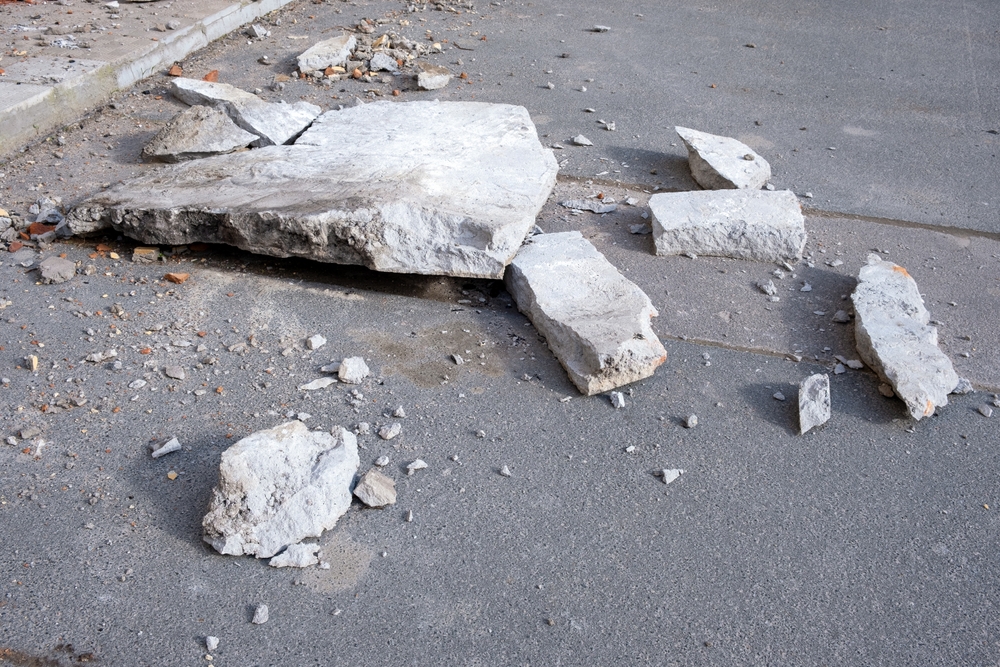April 15, 2024 - Benjamin Ehinger
How to Price Garage Sale Items: Strategies for Maximizing Profit
CALL NOW 844-762-8449
When planning a garage sale, effective pricing strategies are crucial to attract buyers and ensure items sell. Setting the right prices for your items can seem daunting, but it’s pivotal for a successful event. While you want to make a profit, pricing too high may deter potential buyers. Conversely, pricing too low means you might not gain the full value of your offerings.
Understanding the balance between value and demand is key when determining how to price your garage sale items. Factors like the condition of the items, their original retail price, and desirability in your local area all play into how you should price them. Remember, your ultimate goal is to clear out unwanted items while also making some money. Familiarizing yourself with common pricing strategies can lead to a more efficient and profitable sale.
 When organizing your garage sale, it’s essential to price items appropriately to ensure they sell. Here’s a straightforward guide divided into categories to help you determine the right price for your goods.
When organizing your garage sale, it’s essential to price items appropriately to ensure they sell. Here’s a straightforward guide divided into categories to help you determine the right price for your goods.
 Effective advertising and marketing are crucial to attract a large number of potential buyers to your garage sale. It’s important to create a cohesive strategy that includes online platforms, social media, and physical signage to maximize your sale’s visibility.
Effective advertising and marketing are crucial to attract a large number of potential buyers to your garage sale. It’s important to create a cohesive strategy that includes online platforms, social media, and physical signage to maximize your sale’s visibility.
Key Takeaways
- Effective pricing is essential for a successful garage sale.
- Balance item value with demand to attract buyers.
- Utilize common pricing strategies to maximize profit.
Setting Up for Success
Preparing your garage sale effectively can ensure a smoother experience and a more profitable outcome. A successful garage sale starts well before the first customer arrives; it begins with a clear understanding of your goals, a thorough organization of your items, and an accurate assessment of the market value.Determining Your Garage Sale Goals
Begin by defining clear goals for your garage sale. Are you aiming to declutter, make a specific amount of money, or perhaps a bit of both? Your pricing may change based on whether your priority is to maximize profit or to simply clear out space. If income is your focus, you’ll price items higher, yet still reasonable. For a declutter-focused sale, lower prices might encourage a faster sell-through.Organizing and Decluttering Items
Organization is paramount. Start by decluttering each room and categorizing items into sell, keep, and discard piles. It’s important to be decisive; if you haven’t used something in over a year, consider adding it to the sell pile. Once you’ve collected your sale items, organize them further—group similar items together and make sure they’re clean and presentable. A tidy display can help elevate the perceived value of your items.Research and Market Value Assessment
Knowledge of current market values aids in pricing your items effectively. Spend time researching online platforms or visit other garage sales to understand what similar items sell for. Taking note of these prices can guide you to set competitive and fair prices. Items with a higher collectible value or those in excellent condition can be priced slightly higher. Check guides such as The Ultimate Guide to Garage Sale Pricing as a reference for pricing recommendations. Remember to be flexible; if buyers feel they’re getting a good deal, they’re more likely to make a purchase.Pricing Strategies for Garage Sale Items
Establishing the right prices at your garage sale can be the difference between clearing out your home and profitable sales. Implementing key pricing strategies tailored to different item categories, their condition, and market demand will help you attract buyers and sell more effectively.General Pricing Guidelines
In setting your prices, a common approach is adhering to the 10% Rule, where you price items at no more than 10% of the original retail price. For example, an item you purchased at $50 should be marked no higher than $5. Using simple pricing increments such as 25 cents, 50 cents, or whole dollar amounts will simplify transactions for you and the buyers.Tiered Pricing Based on Item Categories
Organize your items into categories and assign pricing tiers to each. For instance:- Books: $1 – $2
- Clothing: $3 – $15, based on the brand and style
- Electronics: $5 – $100, depending on technology and original retail price
Condition-Based Pricing Adjustments
Adjust pricing based on the condition of the item. Divide your goods into condition categories: ‘Like New’, ‘Gently Used’, and ‘Worn’. Lower the price incrementally for items that show more wear or are dated.- ‘Like New’: 75% of base price
- ‘Gently Used’: 50% of base price
- ‘Worn’: 30% of base price
Competitive Pricing and Demand Factors
Survey the demand for items through online marketplaces. If you’re selling highly sought-after items, you can price them slightly higher within the garage sale bracket. Conversely, for items with less demand, price competitively to encourage sale. Always be willing to negotiate, as flexibility increases the likelihood of selling more items.Specific Item Pricing Guides
 When organizing your garage sale, it’s essential to price items appropriately to ensure they sell. Here’s a straightforward guide divided into categories to help you determine the right price for your goods.
When organizing your garage sale, it’s essential to price items appropriately to ensure they sell. Here’s a straightforward guide divided into categories to help you determine the right price for your goods.
Books and Media Pricing
For books, price hardcovers at around $1 and paperbacks at two for $1. Media items such as CDs and DVDs should be priced at two for $1 for older titles, and around $2 for newer releases. These prices can attract buyers looking for inexpensive entertainment options.Clothing and Accessories Pricing
Clothing should generally be priced from $3 to $10, depending on brand and condition. Brand-name items in good condition can be priced slightly higher. Accessories like bags and scarves can range from $2 to $5. When pricing clothing, ensure items are clean and presentable to maximize their appeal.Furniture and Home Decor Pricing
Price furniture pieces based on condition and demand. Smaller items like chairs might be priced from $10 to $30, while larger items like sofas could go from $50 to $200. Home decor ranges widely; small decorative items can be priced at $3 to $10, while larger artwork could go for $15 to $40.Tech Gadgets and Electronics Pricing
Electronics like older model TVs and speakers can be priced from $10 to $50. Recent tech gadgets, if in good condition, can be priced at about 30-50% of their retail value. Always check that electronics are in working order before pricing them for sale.Toys and Games Pricing
Price toys that are in good condition and trendy at $3 to $15. Toys from known brands and in-demand can fetch higher prices. Games, especially board games, should have all pieces and be priced from $3 to $10. Vintage or collectible toys and games can be priced higher, reflecting their value to collectors.Tagging and Labeling Techniques
When preparing items for a garage sale, having a good system for tagging and labeling can significantly streamline the sale process. This section provides clear steps on creating effective price tags and descriptions that will help move your items quickly.Effective Use of Price Tags
Price tags are crucial for clear communication of value. Make sure your price tags are:- Visible: Attach them prominently on items to avoid any confusion.
- Stable: Secure them with tape or string to ensure they stay attached throughout the sale.
- Standardize pricing: Use color-coded stickers to represent different price points. For example, a yellow sticker could signify items priced at $0.50, a blue sticker for $1 items, and so on.
- Bundle pricing: If selling items as a group, make sure the total price is shown, possibly attach a tie-on tag if items are too large for a sticker.
Creating Descriptive and Informative Labels
Creating detailed labels can both reassure buyers and reduce the need for repetitive questioning. Your labels should include:- Item description: Provide a brief but clear description of the item, including condition and size if applicable.
- Highlight features: If the item has special features or is of a particular brand, mention this to justify your pricing.
Advertising and Marketing Your Garage Sale
 Effective advertising and marketing are crucial to attract a large number of potential buyers to your garage sale. It’s important to create a cohesive strategy that includes online platforms, social media, and physical signage to maximize your sale’s visibility.
Effective advertising and marketing are crucial to attract a large number of potential buyers to your garage sale. It’s important to create a cohesive strategy that includes online platforms, social media, and physical signage to maximize your sale’s visibility.
Using Online Platforms
List your garage sale on popular online platforms. The Angi Ultimate Garage Sale Pricing Guide emphasizes the importance of utilizing websites that cater to local classifieds. Such platforms often allow for detailed descriptions and images, increasing interest in your items.- Classified Websites: Craigslist, Letgo, and local community boards are great for item listings.
- Auction Sites: eBay can be useful for rare or higher-value items.
Leveraging Social Media
Expand your reach by posting on social media. According to the guide from Ecwid on garage sale pricing, using platforms like Facebook Marketplace lets you tap into your own network and beyond.- Facebook Marketplace: Ideal for showcasing items with photos and prices.
- Community Groups: Join local buy/sell groups to share your garage sale details.
Signage and Neighborhood Flyers
Signs and flyers are tangible reminders for passersby. As detailed in tips on how to advertise for your garage sale, visibility is key.- Signage: Use bright colors like neon pink or orange to grab attention. Ensure the address and arrow directions are clear.
- Flyers: Distribute in local shops, community centers, and directly in mailboxes, if permitted. Include concise details and standout images.
Negotiation and Haggling Tactics
Negotiation and haggling are key elements to successful garage sales, allowing both you as the seller and your buyers to feel satisfied with the transaction. Understanding the balance between firmness and concession will lead to the best outcomes.Establishing Your Negotiation Baseline
Establish a clear minimum price for each item before the sale begins—this is your negotiation baseline. When pricing, consider factors like the item’s original purchase price and its current condition. This baseline serves as a safeguard to ensure you don’t accept less than what you’re comfortable with during the haggling process.Adopting a Flexible Bargaining Approach
Displaying flexibility can increase the chance of selling more items. Be prepared for shoppers who are haggle-savvy, and willing to negotiate, especially towards the end of the sale when you might be more inclined to offer deeper discounts. While you hold to your baseline, remember that a successful garage sale often requires a bit of give and take.Presentation and Display for Better Sales
Creating an attractive display at your garage sale can significantly impact your sales. By carefully optimizing the layout of items and ensuring that everything is clean and ordered, you’ll make it easier for buyers to find and purchase your goods.Optimizing Item Layout
To optimize your item layout, consider grouping similar items together, such as placing all kitchenware on one table and books on another, to create a cohesive shopping experience. Utilize multiple levels of display, like using shelving units or stacking boxes, to make items visible at eye level. When you make space for everything, customers are more likely to browse and buy.- Arrange your items to showcase them effectively, highlighting products that are in great condition or of higher value at the front to catch the eye.
- Clearly label areas or sections—use signs to guide the customers to the various categories of items on sale.
Maintaining Cleanliness and Order
A clean and orderly setup is essential for a successful garage sale. Make sure all items are free from dust and dirt, and if any electronics are for sale, ensure they are not only clean but also in working order. Repair minor damage to enhance an item’s appeal, and organize items neatly to prevent clutter.- Wipe down all surfaces before displaying items and check throughout the day to maintain this standard.
- Use boxes or bins to keep smaller items organized and accessible. It helps customers to see the items clearly and prevents them from being scattered amidst browsing.
Final Prep and Day-of Sale Tips
As the garage sale day approaches, your focus should be on ensuring that every item is ready to go and that you’re prepared to handle various forms of payment. This will facilitate a smooth and successful sale event.Ensuring Items are Ready and Accessible
Before the hustle of the sale day kicks in, verify that all your items are clean, in working order, and presented in an appealing manner. High-value items should be positioned prominently to attract customers and justified with garage sale prices that reflect their worth. Remember to use simple pricing increments, like 25 cents, 50 cents, or whole dollar amounts, to make transactions straightforward.- High-value items: Label clearly and consider placing near your checkout area for visibility.
- General items: Organize on tables or in boxes with clear, visible pricing.
- Clothing: Hang up if possible or fold neatly, with sizes and prices clearly marked.
Preparing for Different Payment Methods
To avoid missing out on sales, it’s crucial to be flexible with payment methods. Have plenty of change available, particularly smaller bills and coins, to ensure smooth transactions for cash payments. For deals that involve larger sums, consider electronic payment options like mobile payment apps, which are appreciated by many buyers.- Cash payments: Keep a secure cash box or money bag with a good mix of bills and coins for change.
- Electronic payments: Set up your preferred payment app and have your device charged and ready.
- Checks: Decide in advance if you’re willing to accept checks, and from whom (e.g., neighbors or known community members).
Understanding Buyer Psychology
When pricing items for a garage sale, it’s crucial to consider how buyers perceive value and their readiness to negotiate. Your pricing strategy can significantly influence their purchasing decisions.Perceived Value and Pricing Effects
Perceived Value: Buyers often associate the price of an item with its quality. If you price too low, buyers might question the item’s value or assume it’s in poor condition. Conversely, a higher price may suggest better quality but could deter bargain hunters. Use clear, reasonable prices like those seen in the guide How to Price Garage Sale Items 2024, keeping them in simple increments for ease of transaction. Pricing Effects: Remember, your initial price sets the stage for any negotiation. It acts as the anchor from which buyers will base their offers. Price items slightly above your minimum acceptable price to give room for negotiation without undervaluing the item.Creating a Sense of Urgency and Deal-making
Sense of Urgency: To encourage buyers to make a purchase, communicate that the best deals are available only for a limited time. Techniques like time-based price reductions can be effective, as suggested in the garage sale pricing strategy, where you might reduce the price as the sale nears its end. Deal-making: Encourage buyers to feel like they’re getting a deal by being open to negotiation. Bundle items or offer discounts on bulk purchases to move more merchandise. This strategy also plays into buyers’ desire to feel successful in getting a bargain, which can enhance the perceived value of their purchase.Post-Sale Strategies
After the rush of your garage sale, it’s crucial to manage unsold items effectively and assess the event’s performance to maximize your overall profits.Handling Unsold Merchandise
- Decide on Donations: Consider donating unsold goods to local charities or shelters. Quick action ensures these items benefit others and don’t clutter your space.
- Explore Flea Markets: Flea markets could be your next stop. Price items affordably to encourage quick sales, keeping in mind the goal is to clear out merchandise, not necessarily to make a large profit.
Evaluating the Sale’s Success
- Calculate Your Profits: Tally up your earnings and subtract any costs incurred. If your profits meet or exceed expectations, you’ve had a successful garage sale.
- Reflect on Performance: Take notes on what sold well and what didn’t. Use this information to refine your strategy for future sales, ensuring each one is more successful than the last.
Leveraging Sales Data for Future Planning
When you organize a garage sale, keeping track of your sales data is a crucial step towards future success. Cataloging information such as which items sold quickly, which had the most haggling, and the average price point of items sold can inform your pricing strategies in future sales. Here’s how you can leverage sales data effectively:- Record Your Sales: As items sell, jot down the final sale price. This can be as simple as a notebook entry or a spreadsheet column. Use this data to identify patterns in pricing that attracted buyers.
- Monitor Price Adjustments: Note any instances where you had to adjust prices to facilitate a sale. Were these adjustments predictable? Could they have been part of your initial garage sale pricing tips?
- Evaluate Unsold Items: Review the prices of items that didn’t sell. Were they priced too high, or was there simply no demand? This reflection can help you set more realistic prices in the future.
| Quick Recap | Description |
|---|---|
| Best Sellers | List items that sold within the first hour and their sale prices. |
| Slow Movers | Identify items that remained until the end, note their conditions and pricing. |
| Discounts Given | Track when and why discounts were applied. |
- Set Sales Goals: Before your next sale, establish clear goals based on your collected data. Do you want to move volume quickly, or maximize profit on selected items? Your data will guide these decisions.
Frequently Asked Questions
When pricing items for a garage sale, it’s essential to set prices that are fair and will attract buyers. Use these FAQs to guide you through the process, ensuring your items are priced to sell.What are the guidelines for pricing clothing at a garage sale?
Clothing at your garage sale should be priced based on condition and brand. A general rule is to set prices at about 10-20% of the retail value. For example, a lightly-worn designer shirt that originally cost $50 might be priced at $5-$10.How can one use pricing stickers effectively in a garage sale setup?
Use color-coded stickers to denote different price ranges or item categories. This simplifies the shopping experience and helps you manage transactions quickly. Make sure the stickers are firmly attached to prevent any mix-ups or lost tags during the sale.Is there a standard pricing chart or calculator recommended for garage sale items?
There isn’t a universally agreed-upon pricing chart, but many guides suggest starting with simple pricing increments like 25 cents, 50 cents, or whole dollar amounts. This makes change handling more manageable and pricing straightforward for buyers.What strategies should be considered when pricing miscellaneous items for a garage sale?
Pricing miscellaneous items involves assessing their condition and desirability. It’s sensible to price common household items lower to encourage sales, whereas collectibles can be priced slightly higher due to their unique nature. Always be ready to negotiate and reduce prices, especially later in the day.How important is it to display prices clearly on garage sale items?
Clear price displays are vital for a successful garage sale. It prevents confusion and facilitates a smoother shopping experience. Prices should be easy to read so that buyers can make quick decisions without needing to ask for prices frequently.What is a practical way to label various items in a garage sale for clarity and efficiency?
Group similar items together and use large, clearly written labels or signs stating the price. For small or individual items, use simple pricing increments and attach price tags securely to each item. Consider using a tagging gun for clothing. This method keeps your garage sale organized and reduces the need for repeated price inquiries.RECENT BLOGS
Our Reviews
Glenda Lanier Prowell
1721758635
I have ordered an 11 yard dumpster to be delivered to my house.Lonier was extremely helpful and answered all my questions. The rate was very reasonable.
Cedric Smikle
1721660395
Amber was extremely professional and courteous. She answered all of my questions and even some that I didn’t know I needed to ask.
Cait Kaider
1721243051
I highly recommend Waste Removal USA for their responsiveness and how the staff work hard to provide exceptional customer service. They have done well by us and our clients. Thank you!
Easom Family
1721223306
Louiner Pierre-Louis Is awesome! Did a great job. Will definitely be using this same company for all my dumpster needs because of his awesome customer service! Thank you!!!
tabitha Vazquez
1720539988
Wonderful and fast customer service!
LATEST BLOGS






